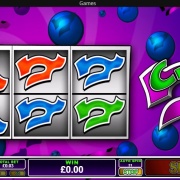Following are some of the suggested color techniques used in the plan shown in Figure 15-24:
1. The evergreen shrubs are drawn as in the previous plan, but no texture is added. All that is missing is a series of labels identifying all the design elements. 4. The large shade tree has very light tints of yellow and green to allow elements beneath the tree to be seen. A number of landscape designers may elect to prepare their landscape design plans in this fashion. This will undoubtedly save time, but it will usually require most of the needed copies to be reproduced in color. The ornamental trees are shown with a soft tint of pink and violet. 5. Because there are no textures rendered on a basic plan, adding some texture will produce a more exciting drawing. 8. Rendering on a basic plan does allow heavier and darker color application, because the textures can be applied after the color is applied. Be careful not to color too heavily, however, because some symbols may tend to become too overpowering. The circular hedge of deciduous plants is easily visible because of the saving of white on the top left of the shrubs. 9. 5. Figure 15-24
COLOR RENDERING A BASIC PLAN (FIGURE 15-24)
There may be times when only a color rendered plan is desired. When a designer decides to add color to such a plan, it is important to follow a simple yet important guideline: Use a soft touch as you apply thin and transparent layers of color so as not to lose the graphic character of the existing landscape symbols. 3. Shrubs, pavements, and ground cover located beneath the tree canopy are given just a hint of color. If colors are added too heavily and are too dark, they will often eliminate the evidence of the existing symbols. The color of the ground cover is filled in with the same swirl line type as was used to draw the initial symbol. Varied pencil pressures were used to create highlights. 6. 8. Following are some of the suggested color techniques used in the plan shown in Figure 15-23:
1. Potted plants are drawn with simple red and green radiating lines, with some peppered shadowing. This type of plan can be copied much more cheaply than a color copy, but it does not have the sales potential of a color drawing. This second method of color rendering deals with the application of color on a basic plan, one in which only simple circles and lines are drawn. The flower bed around the fountain is colored with the same line type and radiates toward the fountain center. The pavements are kept light and transparent. 7. The shade tree is colored with one green color, from light on the top left to
a medium on the bottom right. The deciduous shrubs are colored by saving some white, and some simple branching is added. This is acceptable. 2. The pavements are colored to represent various pavement types. A fine-tipped marker was used to draw in pattern for the concrete, brick courses, and brick edging.


